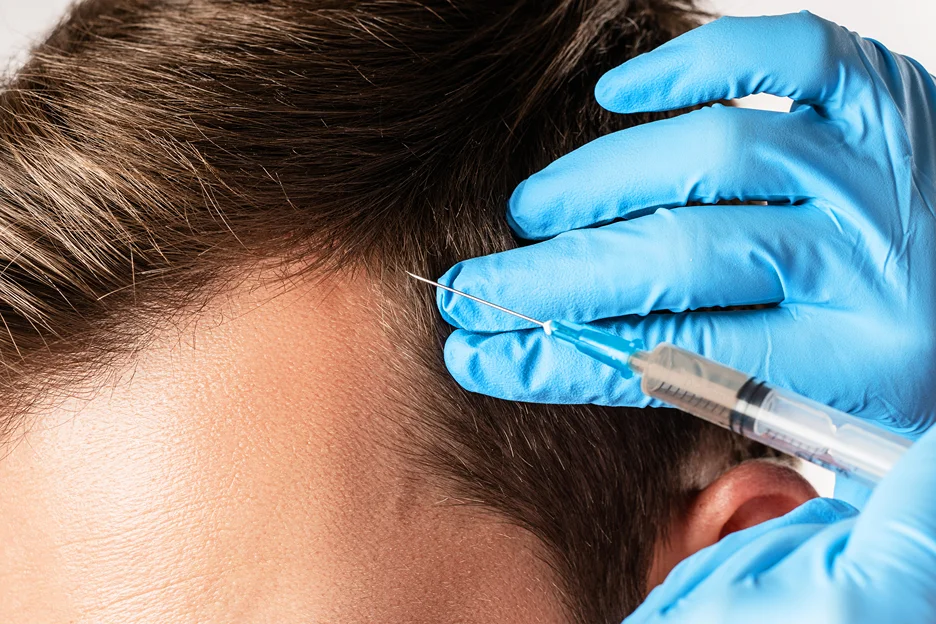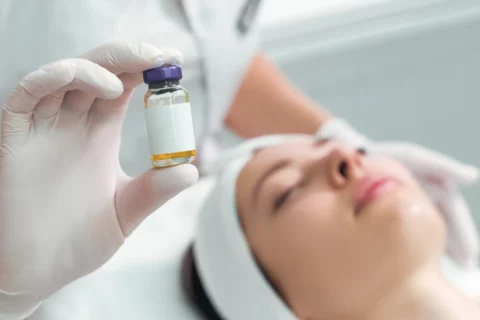Exploring the Potential of Regenerative Medicine for Enhanced Hair Restoration
The Growing Demand for Effective Hair Restoration Solutions
Hair loss can significantly impact a person’s self-esteem and quality of life. Whether it’s due to genetics, aging, hormonal changes, or medical conditions, the desire for a full head of hair fuels a constant search for effective solutions.
Limitations of Current Traditional Therapies
Traditional hair loss treatments, such as minoxidil (Rogaine) and finasteride (Propecia), while effective for some, often come with limitations:
- Side Effects: Minoxidil can cause scalp irritation, while finasteride can have sexual side effects.
- Limited Efficacy: These treatments may not be effective for all types of hair loss or all individuals.
- Long-Term Commitment: Results often require ongoing use, and discontinuation can lead to hair loss resuming.
- Invasive Procedures: Hair transplantation surgery, while effective, is invasive and can be costly.
Exosomes as a Novel Regenerative Approach
Exosomes, tiny vesicles derived from mesenchymal stem cells (MSCs), offer a promising new approach to hair restoration. These vesicles are packed with growth factors, proteins, and genetic material that can stimulate hair follicle regeneration and promote hair growth.
Exosome therapy leverages the body’s natural regenerative capabilities, offering a potentially safer and more effective alternative to traditional treatments.
Understanding the Science: Exosomes in Hair Follicle Regeneration

What are Exosomes? (what are exosomes for hair loss, what is exosome therapy for hair loss)
Biogenesis and Composition
Exosomes are formed within cells through a process called endocytosis. The cell membrane folds inward, creating a vesicle called an endosome. Within the endosome, smaller vesicles, known as intraluminal vesicles, are formed.
When the endosome fuses with the cell membrane, these intraluminal vesicles are released into the extracellular space, becoming exosomes.
Exosomes contain a variety of bioactive molecules, including:
- Growth Factors: Proteins that stimulate cell growth and proliferation, including hair follicle cells.
- Cytokines: Proteins that regulate inflammation and immune responses.
- MicroRNA (miRNA): Small RNA molecules that regulate gene expression.
- Messenger RNA (mRNA): RNA molecules that carry genetic information.
Mechanisms of Action in Cell-to-Cell Communication
Exosomes act as messengers, delivering their cargo of bioactive molecules to other cells. They can interact with target cells through various mechanisms, including:
- Receptor-Mediated Endocytosis: Exosomes bind to specific receptors on the surface of target cells, triggering their uptake.
- Direct Membrane Fusion: Exosomes can fuse with the cell membrane of target cells, releasing their contents directly into the cytoplasm.
This intercellular communication plays a crucial role in tissue regeneration and repair, including hair follicle regeneration.
Exosomes and Hair Follicle Biology (exosomes hair growth, hair growth exosomes)
Impact on Hair Growth Cycle
The hair growth cycle consists of three phases:
- Anagen (Growth Phase): The active phase of hair growth.
- Catagen (Transition Phase): A short phase where hair growth slows and the hair follicle shrinks.
- Telogen (Resting Phase): The hair follicle remains dormant, and the hair eventually sheds.
Exosomes have been shown to positively influence the hair growth cycle by:
- Prolonging the Anagen Phase: Stimulating hair follicle cells to remain in the active growth phase for a longer period.
- Promoting the Transition from Telogen to Anagen: Encouraging dormant hair follicles to re-enter the growth phase.
- Increasing Hair Follicle Size and Length: Stimulating the proliferation and differentiation of hair follicle cells.
Stimulation of Hair Follicle Stem Cells (stem cell exosomes for hair loss, exosome stem cell therapy for hair)
Hair follicle stem cells (HFSCs) are located in a specialized region of the hair follicle called the bulge. These stem cells are responsible for generating new hair follicles and maintaining hair growth throughout life.
Exosomes derived from MSCs have been shown to activate and stimulate HFSCs, promoting their proliferation and differentiation into hair follicle cells. This can lead to the regeneration of new hair follicles and increased hair growth.
Modulation of Inflammatory Responses
Inflammation can play a significant role in hair loss, particularly in conditions like alopecia areata. Exosomes have immunomodulatory properties, meaning they can regulate immune responses and reduce inflammation.
By reducing inflammation in the scalp, exosomes can create a more favorable environment for hair growth.
Traditional Hair Loss Treatments: A Review of Established Therapies
Pharmacologic Interventions
Minoxidil: Mechanism of Action and Clinical Efficacy
Minoxidil, available as a topical solution (Rogaine) or foam, is FDA-approved for treating both male and female pattern baldness (androgenetic alopecia).
Mechanism of Action:
The exact mechanism of action of minoxidil is not fully understood, but it is thought to:
- Increase Blood Flow to Hair Follicles: Dilating blood vessels in the scalp.
- Prolong the Anagen Phase: Extending the active growth phase of the hair cycle.
- Stimulate Hair Follicle Stem Cells: Promoting the proliferation and differentiation of HFSCs.
Clinical Efficacy:
Minoxidil has been shown to be effective in promoting hair growth in some individuals with androgenetic alopecia. However, it typically takes several months to see results, and continued use is necessary to maintain the benefits.
Finasteride and Dutasteride: 5α-Reductase Inhibitors
Finasteride (Propecia) and dutasteride (Avodart) are oral medications that are FDA-approved for treating male pattern baldness.
Mechanism of Action:
These drugs inhibit the enzyme 5α-reductase, which converts testosterone to dihydrotestosterone (DHT). DHT is a hormone that plays a key role in the development of male pattern baldness.
Clinical Efficacy:
Finasteride and dutasteride have been shown to be effective in slowing hair loss and promoting hair growth in some men with androgenetic alopecia. However, they can have sexual side effects, and they are not effective for all men.
Surgical Hair Restoration
Follicular Unit Transplantation (FUT)
FUT, also known as strip harvesting, is a surgical hair transplantation technique.
Procedure:
- A strip of scalp containing hair follicles is removed from the donor area (typically the back of the head).
- The strip is dissected into individual follicular units (groups of 1-4 hair follicles).
- The follicular units are transplanted into the recipient area (the balding area).
Advantages:
- Can transplant a large number of grafts in a single session.
Disadvantages:
- Leaves a linear scar at the donor site.
- Longer recovery time.
Follicular Unit Extraction (FUE)
FUE is another surgical hair transplantation technique.
Procedure:
- Individual follicular units are extracted from the donor area using a small punch tool.
- The follicular units are transplanted into the recipient area.
Advantages:
- Less invasive than FUT.
- No linear scar at the donor site.
- Faster recovery time.
Disadvantages:
- Can be more time-consuming than FUT.
- May require multiple sessions to achieve the desired density.
Other Modalities
Low-Level Laser Therapy (LLLT)
LLLT, also known as red light therapy, involves exposing the scalp to low-level laser light.
Mechanism of Action:
The exact mechanism of action of LLLT is not fully understood, but it is thought to:
- Increase blood flow to hair follicles.
- Stimulate hair follicle stem cells.
- Reduce inflammation.
Clinical Efficacy:
LLLT has shown some promise in promoting hair growth in individuals with androgenetic alopecia, but more research is needed to confirm its effectiveness.
Platelet-Rich Plasma (PRP)
PRP therapy involves injecting platelet-rich plasma derived from the patient’s own blood into the scalp.
Mechanism of Action:
PRP contains growth factors and cytokines that can stimulate hair follicle activity and promote hair growth.
Clinical Efficacy:
PRP therapy has shown some promise in promoting hair growth in individuals with androgenetic alopecia, but more research is needed to confirm its effectiveness.
Exosomes vs. Traditional Therapies: A Comparative Analysis

Efficacy and Safety Profiles
Clinical Studies on Exosome Therapy for Hair Loss (exosome hair therapy results)
While research on exosome therapy for hair loss is still in its early stages, several studies have shown promising results:
- A 2017 study published in the journal Stem Cells Translational Medicine found that exosomes derived from human adipose-derived stem cells (ADSCs) promoted hair growth in mice.
- A 2019 study published in the journal Aesthetic Plastic Surgery found that exosome injections improved hair growth and density in patients with androgenetic alopecia.
- A 2020 study published in the journal Dermatologic Surgery found that exosomes derived from human dermal papilla cells (DPCs) promoted hair growth in a human hair follicle model.
Long-Term Data and Follow-Up
More long-term studies are needed to assess the sustained efficacy of exosome therapy for hair loss. However, the initial results are encouraging, and exosomes appear to be well-tolerated with minimal side effects.
Comparison of Side Effect Profiles
One of the significant advantages of exosome therapy is its favorable safety profile compared to some traditional treatments:
- Exosomes: Generally well-tolerated with minimal side effects. The most common side effects are mild and temporary, such as injection site redness or swelling.
- Minoxidil: Can cause scalp irritation, dryness, and itching.
- Finasteride: Can cause sexual side effects, such as decreased libido and erectile dysfunction.
Cost-Effectiveness and Practical Considerations
Treatment Protocols and Administration
Exosome therapy typically involves a series of injections into the scalp. The number of treatments and the frequency will vary depending on the individual patient and the severity of their hair loss.
The procedure is relatively straightforward:
- The scalp is cleansed and numbed with a local anesthetic.
- The exosome product is injected into the scalp using a fine needle.
- The patient can typically return to their normal activities immediately after the treatment.
Patient Selection and Suitability (exosomes for male pattern baldness, exosomes alopecia, exosomes for alopecia)
Exosome therapy may be a suitable option for individuals with various types of hair loss, including:
- Androgenetic Alopecia (Male and Female Pattern Baldness): Exosomes can stimulate hair follicle regeneration and promote hair growth.
- Alopecia Areata: Exosomes’ immunomodulatory properties may help reduce inflammation and promote hair regrowth in this autoimmune condition.
- Telogen Effluvium: Exosomes may help accelerate hair regrowth in this condition characterized by excessive hair shedding.
Integration into Existing Practice
Integrating exosome therapy into your practice can be seamless. At FACE Med Store, we provide high-quality exosome products that are easy to administer and require minimal specialized equipment. We also offer educational resources and support to help you implement exosome therapy effectively.
The Potential of Exosomes: Shaping the Future of Hair Restoration
Advantages of Exosome Therapy
Minimally Invasive Nature (topical exosomes for hair loss)
Exosome therapy’s minimally invasive nature makes it a highly appealing option for patients who are hesitant about surgery or who want to avoid the potential side effects of some medications.
Potential for Personalized Treatment
Exosome therapy offers the potential for personalized treatment approaches. The concentration of exosomes and the frequency of treatments can be adjusted based on the individual patient’s needs and hair loss condition.
Long-Term Regenerative Effects (exosomes for hair growth and regeneration)
Exosomes’ ability to stimulate hair follicle stem cells and promote hair follicle regeneration suggests that they may offer long-term benefits, potentially leading to sustained hair growth and improved hair density over time.
Future Directions and Research
Ongoing Clinical Trials and Investigations
Ongoing research is crucial for further validating the efficacy of exosome therapy for hair loss and optimizing treatment protocols. Researchers are also investigating the potential of combining exosomes with other hair restoration therapies, such as PRP or micro-needling, to enhance results.
Standardization and Quality Control of Exosome Products (best exosomes for hair growth)
Standardizing exosome production and ensuring the quality and consistency of exosome products is essential for advancing the field of exosome therapy. At FACE Med Store, we are committed to offering high-quality exosome products that meet stringent quality control standards.
Expanding Applications in Hair Restoration
Researchers are exploring the potential of exosomes for treating other hair loss conditions, such as scarring alopecia and traction alopecia. The future of exosome therapy in hair restoration holds great promise.
Embracing Innovation in Hair Loss Treatment

Exosomes as a Promising Therapeutic Option (exosomes hair regrowth, exosomes for hair regrowth)
Exosomes represent a groundbreaking advancement in the field of hair restoration. Their ability to stimulate hair follicle regeneration, promote hair growth, and modulate inflammatory responses makes them a compelling alternative to traditional treatments.
Considerations for Incorporating Exosomes into Practice (Soft-Sell: Explore Face Med Store’s range of high-quality exosome products)
At FACE Med Store, we offer a curated selection of high-quality exosome products designed to meet the needs of your practice. We invite you to explore our range of exosome products and discover how you can integrate this innovative therapy into your hair restoration offerings.
A Call for Continued Research and Collaboration
Continued research and collaboration are essential for further advancing the field of exosome therapy for hair loss. At FACE Med Store, we are committed to supporting the research community and fostering collaboration to unlock the full potential of exosomes in hair restoration.
We believe that exosome therapy has the potential to transform the way we approach hair loss treatment, offering patients safer, more effective, and potentially long-lasting solutions.






